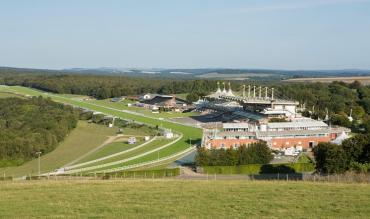Widely considered to be one of the most scenic racecourses in Great Britain, Goodwood Racecourse has a great history of racing.
The racing at Goodwood can be traced back to 1802, when Charles Lennox, third Duke of Richmond, established a racecourse, known as “The Harroway”, on the Goodwood Estate.
Goodwood History
Except for a break in proceedings due to World War II, Goodwood Racecourse has done really well for itself ever since.
Its five day festival of racing, known as “Glorious Goodwood” is known globally and takes place in late July and early August. It is one of the highlights of the British racing calendar and ranks second in stature and prestige to Royal Ascot.
It also comes a close second to the Royal Ascot betting in terms of turnover for the bookmakers.
Biggest Races At Goodwood
At their premier meeting of the season – Glorious Goodwood, the major races run during the week are, in chronological order: The Goodwood Cup, the Sussex Stakes, the Nassau Stakes and the Stewards’ Cup.
The Goodwood Cup is run over 2 miles and is open to horses aged three years and upwards. It was awarded Group One status in 2017 and is worth around half a million pounds.
The Sussex Stakes is run over a mile and is open to horses aged three years and upwards.
It has been a Group One contest since 1971 and is considered the most prestigious race of the week at Glorious Goodwood.
It is the first opportunity of the season for three-year-olds of the ‘Classic’ generation to take on older horses over a mile at the highest level.
The Nassau Stakes is run over a mile and a quarter and restricted to fillies and mares aged three years and upwards.
It became a Group One in 1999 and is worth around £600,000 in prize money.
The most historic race is the Stewards’ Cup which was inaugurated in 1840. It is one of the most competitive handicaps of the year and is run over six furlongs.
It usually attracts a massive field which many refer to as the Stewards’ Cup cavalry charge!
Outside of Glorious Goodwood the course also stages an important three-day spring meeting in May and another three day one in late August, when the feature race is the Celebration Mile.
Goodwood Course Configuration
The track is a right handed one. There are two bends and all races up to a mile and a quarter use the lower bend, anything in excess of eleven furlongs use the top bend.
The turns and the pronounced downhill gradients class Goodwood as a sharp track, making it somewhat of a front runners track.
The five-furlong course is one of the fastest in the UK, so horses referred to as speedballs often have an advantage. You should look out for those types in the horse racing odds.
Hold up horses regularly meet trouble in the straight, particularly if they try to chart a path up the rail which is always a traffic laden part of the track.
Getting to Goodwood
The easiest way to get to Goodwood Racecourse, if not driving, is by catching the train to Chichester.
From Chichester Railway Station, a complimentary bus service will take you to and from the station.
*Credit for the photos in this article belongs to Alamy*
